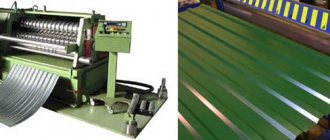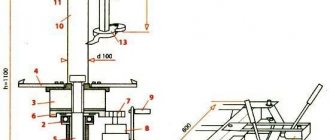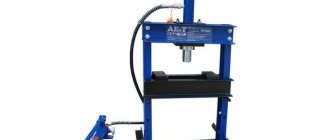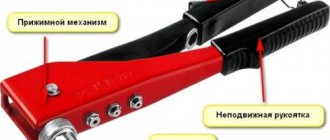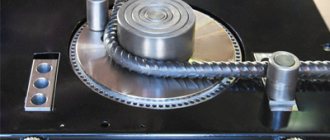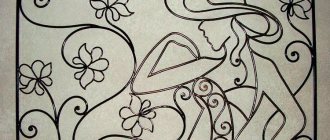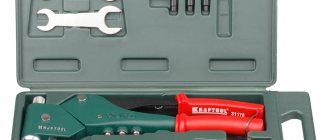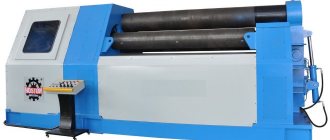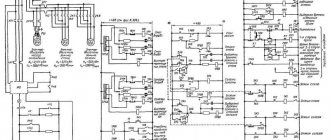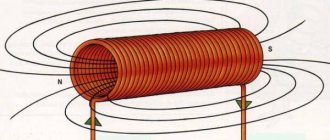Sale of bending machines with a discount of up to 5%. Availability of machines in warehouse in Moscow. More than 40 representative offices in Russian cities. Delivery of machines from 2 days to 2 weeks
It is probably difficult to find a metal structures production facility that does not have bending equipment. After all, with the help of manual bending machines you can perform a large number of operations, such as: bending, rolling, profiling, cutting, reinforcing various metal rods and pipes. This equipment is simply necessary in forge shops, on construction sites and at various metalworking enterprises.
Let's take a closer look at manual bending machines and, based on the information provided, you can make the right choice. Flanging machines.
These machines are also called edge bending machines. Using this equipment, it becomes possible to roll, bend, profile and reinforce sheet material. Flanging machines are used when performing roofing work and when installing ventilation systems.
Typically, edge bending machines are quite compact and you can easily secure them to your workbench using a clamp. The material is processed by 2 rollers of different diameters and the same profile, and the part is rolled between them.
Ease of use lies in the mobility of flanging machines; due to their low weight, they can be moved from one construction site to another. You can work on the machine without connecting it to the network.
Operating principle of a manual sheet bender
The sheet metal is placed on the work table and secured with a pressure beam (crossbeam). Then the rotary beam bends the workpiece to the desired angle. If necessary, the sheet is cut with a knife, which moves along guides along the length of the sheet bending machine.
Depending on the production tasks, the capabilities of the sheet bender can be expanded if you buy additional accessories: a folding machine, a support table, a protractor, a bending angle limiter, a cutting machine, etc.
Disadvantages of a manual machine for corrugated sheets
A manual machine for the production of corrugated sheets also has some disadvantages. First of all, this is the short length of the resulting corrugated sheet. It is usually 2.0-2.5 m. With large sizes of the working plate, uneven bending of the profile in the form of an arc is possible, which occurs due to different compression forces in different parts of the pressure lip.
Manufacturing corrugated sheets from galvanized sheets on a manual machine for corrugated sheets
In addition, it is worth noting that on a manual machine for corrugated sheets it is possible to produce only one brand of corrugated sheet. However, machines with a replaceable matrix are now being produced, which makes it possible to produce corrugated sheets with different shapes and trapezoid heights. In this case, the bending dies must be replaced manually.
And the main disadvantage is that using a manual machine you can only make profiled sheets from galvanized steel. When deformed, the polymer coating of the metal may become covered with small cracks, which will subsequently lead to premature corrosion of the corrugated sheet.
This problem is solved with the help of special modern manual machines for processing thin sheet steel with a polymer coating. However, they cost significantly more than standard options. In addition, galvanized profiled sheets can be painted. At the same time, modern technologies for applying paint and varnish coatings, such as, for example, powder painting, create a decorative and protective layer that is in no way inferior, and maybe even superior in quality, to a polymer protective and decorative coating.
Top ↑
Plate bending machines may vary in design
- Pass-through sheet benders and machines with limited sheet feed;
Most sheet metal bending machines are designed with no feed restrictions, allowing you to work and cut large sheet sizes directly from the coil.
But there are models with limited sheet feeding, which have their own advantages: mobility (low weight) and more precise fixation of the sheet with a pressure beam along the entire length.
- Sheet bending machines with an all-metal pressure beam;
The most popular design of the pressure beam, which forms a separate element of the machine and is permanently attached to it.
- Sheet metal bending machines with segmental pressure beam (segmental);
If you buy sheet bending machines from our company in Moscow and throughout Russia, equipped with such a beam, this will allow you to produce boxes with several sides bent. Such segment bending machines for sheet metal can have a pressure beam, a bending table and a work table, which adds the possibility of using a sheet metal bender, but the price of such equipment is much higher than that of a manual sheet metal bending machine.
- Sheet benders with electric clamping of the pressure beam.
If you buy a sheet bending machine of this design, the clamping beam will be a replaceable element of the sheet metal bending machine and will be installed for a specific task, and the clamping will be carried out using an electromagnet.
When purchasing such a bending machine for sheet metal from our company in Moscow and throughout Russia, the kit includes several types and geometric shapes of clamping beams. This type of sheet metal bender has a large arsenal of possibilities for bending complex parts and has a higher price.
Design and operating diagram of a manual machine
To buy a manual machine for making corrugated sheets of the exact configuration that is suitable for specific operating conditions, you need to carefully study the design of the unit, become familiar with its design features and understand the operating principle. Only a thorough approach allows you to choose the right model.
Design of a manual machine for the production of corrugated sheets
The manual type machine for producing profiled sheets has three functional units based on its design. This:
- Bending mechanism. It is securely attached to the molded frame. This mechanism consists of a set of gears and hinges of various types, which are driven by manually controlled levers. Also integrated into the gears and hinges is a pressure beam and a bending matrix (this element is replaceable).
- Serving table. This element is often called the back table. From it, the sheet blank is fed towards the bending mechanism. You need to place the sheet on the table and gradually insert it into the receiving compartment of the mechanism. As a rule, a roller-type knife is integrated into the edge of the feed table. The material from which the roller knife can be made should allow cutting about 25 kilometers of metal sheet (sheet thickness 0.5 millimeters). Most often, roller-type knives are made of high-strength stainless steel. The knife can be sharpened periodically. When sharpening is no longer possible or the roller blade is damaged, it should be possible to replace it with a similar one.
- Receiving table with stops and fastenings. From the name it is clear that this element receives a metal sheet during the rolling process. The stops of such a table can be adjusted to fit a specific corrugated sheet. It also has an integrated plate, which serves to allow you to set the bending angle that needs to be obtained as accurately as possible. This plate also serves as an additional fixation for the metal sheet.
The design of the manual machine is very simple. This makes it quite easy to operate, and operation seems safe and reliable.
Working cycle of a manual machine
High-quality corrugated sheeting can be obtained on a manual machine if the unit operates approximately according to the following scheme:
- The galvanized steel sheet is placed on the built-in table and firmly secured with clamps.
- Next, a wave or trapezoidal bend is formed. A steel beam is used for this. As a rule, on manual machines for corrugated sheeting, you can select the bending force (according to the thickness of the steel sheet).
- The formation of a wave or trapezoid is controlled by special mechanical sensors. They are the ones who stop the bending process at the right moment.
- By means of a control scale, the flexion angle and the stroke of the traverse are monitored, respectively.
- When one bend is ready, the unwinding of the metal roll starts.
- Then all the above points are repeated again.
- When the required length of the metal sheet has been processed, it is cut off with an integrated knife (guillotine).
Equipping the machine with a manual drive allows you to control the process with one hand. The entire process from start to finish usually does not require significant effort on the part of the operator.
Advantages of Manual Sheet Metal Bending Machine
- low price;
You can buy a manual sheet bender in Moscow at a competitive price in the catalog of our company’s online store. The cost of a Russian-made manual sheet bender is significantly lower than that of electromechanical and bending machines.
- simple design;
Operating a sheet metal bending machine does not require special personnel training. Installation and configuration are easy.
- mobility;
If you buy a manual sheet bending machine in Moscow or have it delivered by Russian transport companies to any region of Russia, you can eliminate the problem of excess weight of the equipment (usually the weight of the equipment is up to 300 kg), compact dimensions and ease of assembly allow you to easily transport the bending machine across the territory carrying out work. This is very convenient, for example, when carrying out work directly on the roof of houses and in the field conditions of construction sites.
- The machines do not depend on power supply.
Sheet metal bending machines can be used in facilities where there is no electricity (for example, in buildings under construction).
Advantages and disadvantages
A manual machine for the production of corrugated sheets is often purchased by both small private companies and large industrial holdings. These statistics suggest that such units have a number of significant advantages. And if there are any disadvantages, they are more than offset by the advantages.
Advantages
Experienced operators of manual machines for profiled sheets note the following advantages of such devices:
- There is no need to connect the unit to a power source. The only necessary source of energy is man and human power.
- To install the system, you need a small room or outdoor area under a canopy from rain and sun.
- To start production, the efforts of only two workers are needed. With a well-functioning cycle, one person can operate the machine.
- The economic feasibility of purchasing a personal machine for the production of profiled sheets for further use by the company.
- Production can even be established directly at the site of further use of the profiled sheet. For example, at a large construction site.
- A machine of this type practically does not require any special maintenance. Regular lubrication and adjustment if necessary is sufficient.
- Relatively low purchase and operating costs. Manual machines are in demand in Europe. After all, electricity is very expensive in European countries.
It is no coincidence that even large enterprises that have automated equipment installed do not refuse some manual units.
Flaws
Despite all the advantages of manual machines for corrugated sheets, they also have some disadvantages. The disadvantages are the following:
- Limited length of the final profiled sheet. As a rule, the maximum length is 200-250 centimeters.
- The starting material is only galvanized steel. To use other sources, special additional matrices are required.
- One matrix - one type of profiled sheet.
Professionals from different countries do not consider such shortcomings to be critical.
Manual machine for profiled sheets - technical characteristics
The manual machine for profiled sheets has the following main technical characteristics:
- the length of the resulting corrugated sheet is 2.0-2.5 m;
- the largest bending angle of the workpiece is 150°;
- initial workpiece material: carbon sheet steel 1.0-1.2 mm thick, stainless steel sheet 0.5 mm thick, copper sheet 1.3 mm thick and aluminum sheet 1.5 mm thick;
- productivity: about 120 sheets of corrugated sheets measuring 1000x2500 mm per shift.
Useful article? Save it on social networks so you don’t lose the link!
Top ↑
Team oprofnastile.ru
Read on topic:
Steel for the production of corrugated sheets
Everything you need to know about metal for corrugated sheeting: technical characteristics, types of coatings, prices. Summary table of the cost per ton of raw materials for corrugated sheets from various manufacturers.
Workshop for the production of corrugated sheets
What elements does the corrugated sheet production line consist of? What are their technical characteristics? What requirements must a corrugated sheet production shop satisfy? You will find answers to these questions in the article.
